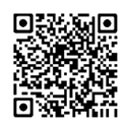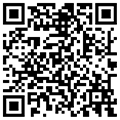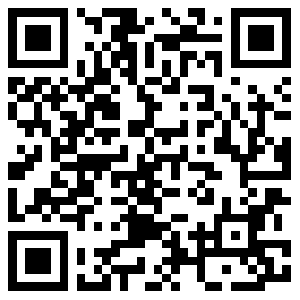选择性腰椎神经孔神经阻滞
2018年07月20日 4643人阅读 返回文章列表
腰下肢痛患者的治疗,单靠X光片子或MRI等影像学诊断,有时难以确定疼痛的特定原因。遇此情况应搞清疼痛究竟在哪里,感觉、肌力的障碍又在何处发生。若疼痛部位用脊神经皮肤分布图对照后位于腰部、骶部时,可诊断为神经根症,对此进行相应神经根阻滞,疼痛则立即消失。这种神经根阻滞疗法,不仅有治疗性意义,也有诊断性价值,借此在难以确定疼痛部位时,神经根阻滞有助于其判断,而且根据造影所见可判断压迫等形态改变。同济大学附属东方医院疼痛科王祥瑞
腰椎椎间盘突出症致神经压迫的病例,有时虽作硬膜外阻滞也得不到临床效果,遇情况可选用神经根阻滞,即能获良效。1971年Marcnab首次报道X线透视下油性造影剂注入法,称为《神经根渗入作用(nerve root infiltratiom)》,疼痛治疗上则称为《根性阻滞》(root block)。在矫形外科领域,田岛等 应用于椎间盘突症等腰椎疾病的形态学、机能学术前诊断,称此为《选择性神经根造影/阻滞》(Selective radiculography/block)简称SRG/SRB。神经根阻滞是作一次阻滞后能获长时镇痛的非常有效的疗法,因操作时可感短暂的锐痛,应严格掌握适应证和正确的操作技术。
神经根阻滞的适应证
1、适应于神经根阻滞的腰下肢痛患者很多,带有神经根症的患者是其适应证,即椎间盘突出症、腰部椎管狭窄症、腰椎滑脱所致根性痛。尤其是应用于椎管狭窄症恶化时的急性疼痛,可获戏剧性效果。沿特定皮区的感觉异常,可选择与此相应的神经根。但神经根阻滞是侵袭性的操作,因而一般先作药物疗法、触痛点阻滞、硬膜外阻滞,若无效果时再做神经根阻滞。也主张在早期进行神经根阻滞者 。
神经根阻滞符合于相应神经根,即有诊断意义,又有治疗意义。神经根阻滞用于诊断时尽可能少量(2ml)药物,使之作用于单独的神经根,注入的药物量多时,药物扩散到硬膜外腔,不仅神经根被阻滞而且也出现硬膜外阻滞状态。若在神经根阻滞后出现镇痛,则可以肯定该神经根就是患病部位,所获镇痛中部分疼痛残存时,说明除该当神经根之外还有与疼痛有关的其他神经,此时应把与疼痛有关的神经作阻滞,即复数神经根阻滞来确定患病部位。
2、带状疱疹后神经痛。
3、手术后疼痛,反射性交感神经萎缩症等。
Selective Transforaminal Nerve Block: Lumbar选择性经神经孔神经阻滞:腰椎
Materials
• Basic discogram tray• 3.5" or 5" 22 gauge spinal needle with a 30 degree curve• Non-ionic iodinated contrast, iopamidol (Isovue 200)
材料
1. 基本的椎间盘X片支架
2. 1.5”或2.5” 25G脊髓穿刺针
3. 非离子碘化造影剂,碘帕醇(碘帕醇注射液300)
Pharmaceutical Agents
• 2% lidocaine for cutaneous anesthesia
- buffer lidocaine by mixing 1 cc of sodium bicarbonate with 4 cc of 2% lidocaine
• triamcinolone acetonide (Kenalog), 40 mg/ml
• 0.5% bupivicaine hydrochloride (Sensorcaine)
药物制剂
1. 表面麻醉使用的2%利多卡因
--1cc碳酸氢钠和4cc2%利多卡因制成的利多卡因缓冲剂
2. 40mg/ml氟羟氢化泼尼松缩丙酮(康宁乐)
3. 0.5%盐酸布比卡因
Technique
Posterior (Curved Needle) Approach
• Position the patient prone on the fluoroscopy table.
• Adjust the C-arm to align the spinous processes in the center of the vertebral body. Use cranial-caudal angulation as needed to visualize the superior endplate in tangent.
• Using fluoroscopic guidance, direct the tip of a radioopaque probe (e.g. Kelly forceps) inferior to the transverse process and lateral to the facet joint complex (yellow dot in Figure 1). Mark the underlying skin with indelible marker.
• Prep and drape the skin using standard sterile technique.
• Administer local skin anesthesia using a 25 gauge needle and buffered lidocaine.
• Place a 30 degree curve on the distal 1.5 cm of a 22 gauge spinal needle. The bevel should lie on the outside of the curve.
• Advance the needle into the skin and deeper tissues, applying necessary torque to keep the tip lateral to the facet joint complex.
• Rotate the C-arm into the lateral position as needed to check depth of needle placement.
• When the needle tip has reached the level of the facet joint on the lateral view, use the curvature of the needle and appropriate torque to bring the tip medial.
• Target the midline of the pedicle on the AP view (Figure 2) and the anterior foramen on the lateral view (Figure 3). If the patient experiences paresthesias or radicular pain before reaching this point, do not advance the needle further to avoid injuring the nerve.
Figure 1
Figure 2
Figure 3
• Remove the inner stylet from the spinal needle and attach a short extension tubing, preflushed with contrast, to the needle hub.
• Inject a small amount of contrast to confirm needle placement in the epiradicular space and absence of vascular filling. If done properly, contrast should outline the nerve and may extend to the adjacent epidural space (Figure 4).
• Acquire a fluoroscopic spot image documenting needle position and contrast distribution.
• Inject 2.0 cc of a mixture containing 1.5 cc of triamcinolone acetonide (Kenalog, 40 mg/cc) and 1.0 cc of bupivicaine hydrochloride (Sensorcaine, 0.5%). Approximately 0.5 cc of this solution will remain in the extension tubing after injection is complete.
• Obtain a spot image to document appropriate washout of contrast material (Figure 5).
• Remove needle and apply light manual pressure over the injection site to achieve hemostasis.
Figure 4
Figure 5
操作技术
①后路(弯针)入径
1. 患者俯卧于X线透视检查床上
2. 调整C臂使棘突对准椎体中间,必要时可使用颅尾位使上终板在切线位置可见
3. 在透视引导下将不透光的探针(如kelly钳)尖端置于横突下方、关节突关节外侧,并用不可擦洗记号笔在下方皮肤做标记
4. 用标准无菌技术对皮肤进行消毒铺巾
5. 用25G注射针以利多卡因缓冲液进行局部皮肤麻醉
6. 准备一根远端1.5cm有30度弯曲的22G脊髓穿刺针。穿刺针斜面位于弯曲外侧
7. 进针进入皮肤及深部组织并适当旋转使针尖位于关节突关节外侧
8. 旋转C臂至侧位以检查穿刺针深度
9. 继续进针至前后位椎弓根中线、侧位前神经孔位置。如在进针到达此位置前患者感觉到麻木或者神经根疼痛则应停止进针以免损伤神经
10. 移除脊髓穿刺针内芯并连接一根用造影剂预冲洗过的延长管
11. 注射少量造影剂以确定穿刺针位于根膜外腔且未进入血管。如果操作正确,造影剂会勾勒出神经轮廓并可能扩散至临近硬膜外腔
12. 进行透视点影像摄片证实穿刺针位置及造影剂分布
13. 注射2.0cc由1.5cc氟羟氢化泼尼松缩丙酮和1.0cc盐酸布比卡因制成的混合液。在注射结束后约有0.5cc的混合液留在延长管内
14. 进行透视点影像摄片证实造影剂被冲刷
15. 移除穿刺针,轻柔压迫穿刺点止血
--------------------------------------------------------------------------------
Oblique (Straight Needle) Approach
• Position the patient prone on the fluoroscopy table.
• Rotate the C-arm to the side of patient's symptoms until the facet joint lies centered over the vertebral body (Figure 6).
• Direct the tip of a radioopaque probe (e.g. Kelly forceps or 18 G needle) just inferior to the pedicle at the 6 o'clock position using fluoroscopic guidance. Mark the corresponding skin entry site with indelible marker.
• Prep and drape the skin using standard sterile technique.
• Using a 25 gauge needle and buffered lidocaine, administer local skin anesthesia.
• Advance a 22 gauge spinal needle into the skin and deeper tissues, keeping its trajectory parallel with the angle of the x-ray tube (Figure 7).
• Continue advancing slowly until the patient experiences paresthesias/radicular pain or contact with bone is appreciated.
• Rotate the C-arm into AP position to check needle position. The needle tip should lie near the 6 o'clock position of the pedicle. Advancing the tip further medial may result in dural puncture.
• Remove the inner stylet from the spinal needle and attach a short extension tubing, preflushed with contrast, to the needle hub.
• Inject a small amount of contrast to confirm needle placement in the epiradicular space and absence of vascular filling. If done properly contrast should outline the nerve and may extend to the adjacent epidural space (Figure 8).
• Acquire a fluoroscopic spot image documenting needle position and contrast distribution.
• Inject 2.0 cc of a mixture containing 1.5 cc of triamcinolone acetonide (Kenalog, 40 mg/cc) and 1.0 cc of bupivicaine hydrochloride (Sensorcaine, 0.5%). Approximately 0.5 cc of this solution will remain in the extension tubing after injection is complete.
• Obtain a spot image to document appropriate washout of contrast material (Figure 9).
• Remove needle and apply light manual pressure over the injection site to achieve hemostasis.
斜路(直针)入路
1. 患者俯卧于X线透视检查床上
2. 旋转C臂至患者患侧使关节突关节位于椎体中间
3. 透视引导下将不透光探针(kelly钳或18G针)尖端指向椎弓根下方6点位置,用不可擦洗记号笔在穿刺相应皮肤位置做标记
4. 用标准无菌技术对皮肤进行消毒铺巾
5. 用25G注射针以利多卡因缓冲液进行局部皮肤麻醉
6. 22G脊髓穿刺针穿刺进入皮肤及深部组织,,保持穿刺针与X射线管角度平行
7. 持续缓慢进针直到患者感觉到麻木或神经根疼痛,或者穿刺针碰到骨头
8. 旋转C臂至前后位检查穿刺针位置,穿刺针针尖应位于椎弓根6点位置,进一步进针可能导致硬脊膜穿透
9. 移除脊髓穿刺针内芯并连接一根用造影剂预冲洗过的延长管
10. 注射少量造影剂以确定穿刺针位于根膜外腔且未进入血管。如果操作正确,造影剂会勾勒出神经轮廓并可能扩散至临近硬膜外腔
11. 进行透视点影像摄片证实穿刺针位置及造影剂分布
12. 注射2.0cc由1.5cc氟羟氢化泼尼松缩丙酮和1.0cc盐酸布比卡因制成的混合液。在注射结束后约有0.5cc的混合液留在延长管内
13. 进行透视点影像摄片证实造影剂被冲刷
14. 移除穿刺针,轻柔压迫穿刺点止血

 浙公网安备
33010902000463号
浙公网安备
33010902000463号



